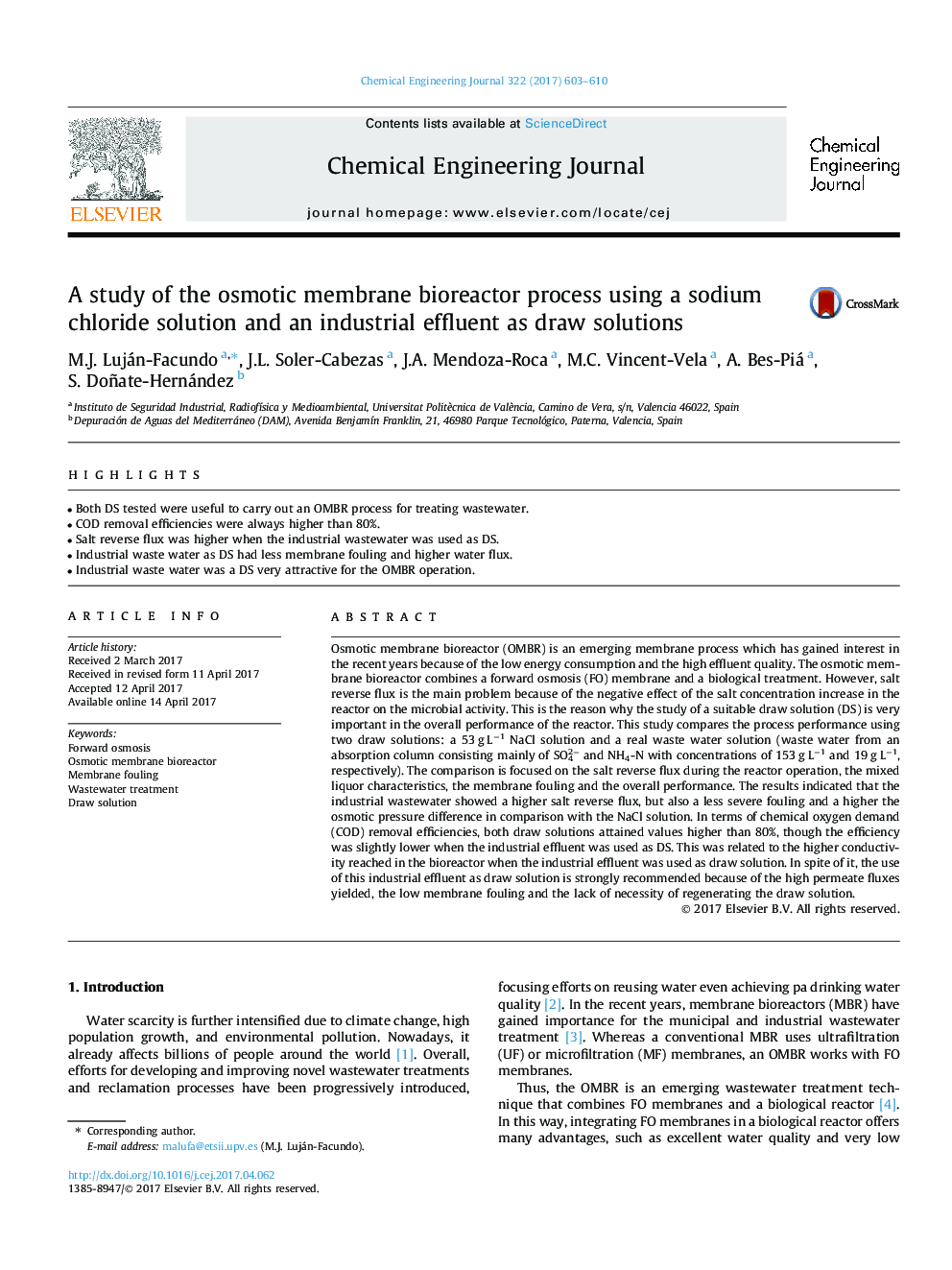| کد مقاله | کد نشریه | سال انتشار | مقاله انگلیسی | نسخه تمام متن |
|---|---|---|---|---|
| 6465669 | 1422956 | 2017 | 8 صفحه PDF | دانلود رایگان |
- Both DS tested were useful to carry out an OMBR process for treating wastewater.
- COD removal efficiencies were always higher than 80%.
- Salt reverse flux was higher when the industrial wastewater was used as DS.
- Industrial waste water as DS had less membrane fouling and higher water flux.
- Industrial waste water was a DS very attractive for the OMBR operation.
Osmotic membrane bioreactor (OMBR) is an emerging membrane process which has gained interest in the recent years because of the low energy consumption and the high effluent quality. The osmotic membrane bioreactor combines a forward osmosis (FO) membrane and a biological treatment. However, salt reverse flux is the main problem because of the negative effect of the salt concentration increase in the reactor on the microbial activity. This is the reason why the study of a suitable draw solution (DS) is very important in the overall performance of the reactor. This study compares the process performance using two draw solutions: a 53 g Lâ1 NaCl solution and a real waste water solution (waste water from an absorption column consisting mainly of SO42â and NH4-N with concentrations of 153 g Lâ1 and 19 g Lâ1, respectively). The comparison is focused on the salt reverse flux during the reactor operation, the mixed liquor characteristics, the membrane fouling and the overall performance. The results indicated that the industrial wastewater showed a higher salt reverse flux, but also a less severe fouling and a higher the osmotic pressure difference in comparison with the NaCl solution. In terms of chemical oxygen demand (COD) removal efficiencies, both draw solutions attained values higher than 80%, though the efficiency was slightly lower when the industrial effluent was used as DS. This was related to the higher conductivity reached in the bioreactor when the industrial effluent was used as draw solution. In spite of it, the use of this industrial effluent as draw solution is strongly recommended because of the high permeate fluxes yielded, the low membrane fouling and the lack of necessity of regenerating the draw solution.
Journal: Chemical Engineering Journal - Volume 322, 15 August 2017, Pages 603-610
